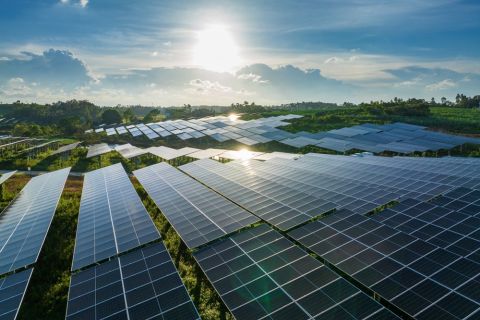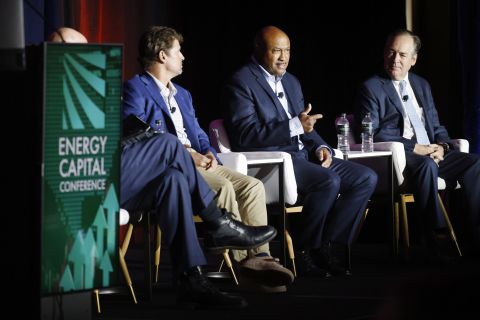By John Kemp, Reuters
Global oil production exceeded consumption by just over 1 billion barrels (Bbbl) in 2014-2015, according to the International Energy Agency (IEA).
Production exceeded consumption by an average of 0.9 million barrels per day (MMbbl/d) in 2014 and 2.0 MMbbl/d in 2015.
Of the 1 Bbbl reportedly produced but not consumed, roughly 420 million are being stored on land in member countries of the Organization for Economic Cooperation and Development (OECD).
Another 75 MMbbl are thought to be stored at sea or in transit by tanker somewhere from the oil fields to the refineries.
That leaves 550 million “missing barrels” unaccounted for, apparently produced but not consumed and not visible in the inventory statistics.
Missing barrels are recorded in the “miscellaneous to balance” line of the IEA’s monthly Oil Market Report as the difference between production, consumption and reported stock changes.
The miscellaneous item reflects errors in data from OECD countries, errors in the agency’s estimates for supply and demand in non-OECD countries, and stockpile changes outside the OECD that go unrecorded.
IEA data currently shows a miscellaneous to balance item of 0.5 MMbbl/d in 2014 and 1.0 MMbbl/d in 2015.
Missing barrels have been a feature of IEA statistics since the 1970s.
Over time, errors have occurred in both directions, and have ranged up to 1 MMbbl/d or even 2 MMbbl/d.
Most of the time, the oil market ignores the miscellaneous to balance item, but it tends to become controversial when it becomes very large, either positive or negative.
Errors, Omissions
The last time the miscellaneous to balance item was this large and positive (implying an oversupplied market) was in 1997-1998 when the issue triggered fierce criticism of the IEA’s statistics.
Critics accused the IEA of over-estimating supply, under-estimating demand, contributing to perception of a glut, depressing prices, and causing unnecessary hardship to the oil industry.
Senator Pete Domenici, chairman of the U.S. Senate Budget Committee, asked the General Accounting Office to investigate the IEA’s statistics and the question of missing barrels.
In a report published in May 1999, GAO concluded “missing barrels are not a new condition, and the amount and direction of missing barrels have fluctuated over time.
“At any point in time, the historical oil supply and demand as well as the stock data reported by IEA could be overstated or understated by an unknown magnitude.”
It was not possible to “quantify how much of the missing barrels are due to statistical limitations and how much are the result of physical oil storage in unreported stocks.”
In the 1997-1998 episode, the IEA concluded most of the missing barrels went into non-OECD storage and uncounted OECD inventories.
In the current episode, it is also very likely some of the 550 MMbbl unaccounted for in 2014-2015 have gone into unreported storage outside the OECD.
China’s government is known to have been filling its Strategic Petroleum Reserve. More barrels are likely to have gone into commercial storage in China and in other countries outside the OECD.
But it is at least possible some of the missing barrels have been caused by the IEA over-estimating oil supplies or under-estimating demand.
Clearing The Overhang
The question of what has happened to the missing barrels, and whether some of them exist at all, is critical because it could affect how quickly the oil market rebalances.
The IEA and most other forecasters predict the oil market will remain oversupplied throughout 2016 and the first half of 2017, ensuring stockpiles continue growing.
In its Medium-Term Oil Market Report, published last month, the IEA predicted consumption would not exceed supply on a full-year basis until 2018.
Some analysts argue the market will need to eliminate the excess supply and work down some proportion of the inherited stocks before oil prices can rise sustainably.
With the oil market expected to remain in surplus throughout 2016 and “already awash in oil” the IEA has said that “it is very hard to see how oil prices can rise significantly in the short term.”
To the extent the miscellaneous to balance item reflects oil that has gone into unreported storage, it will take longer to clear the overhang of stocks that built up in 2014-2015 and continue to build in 2016.
But to the extent the missing barrels are the result of over-estimating supply and under-estimating demand, or have been absorbed into China's strategic stocks, the overhang could clear more quickly.
Possible Production Freeze
Following the 1997-1998 episode, the missing barrels that accumulated in unreported non-OECD storage were drawn down in 1999, according to the IEA.
In December 1999, the IEA wrote: “The weight of (the) evidence is that the missing barrels did exist and that they have now returned to the market.
“The return was triggered by the reversal in the shape of the forward price curve and the need for additional barrels following OPEC’s effective production limitation,” which began in March 1999.
By the end of 1999, the oil market was seeing excess demand and prices were rising. But the rapid recovery depended on very strong economic growth in North America and Asia (after the East Asian financial crisis in 1997-1998).
It also depended on substantial production cuts by OPEC in conjunction with production restraint from non-OPEC countries.
And it was both heralded and caused by a shift in the forward price curve from contango to a state of backwardation (which made oil less profitable to store).
The events of 1999 illustrate the factors needed to clear an inherited glut of oil (strong demand, production restraint and a shift in the shape of the forward price curve).
Current circumstances share some similarities with 1998-1999 but there are also important differences which should not be overlooked.
The current stock build has been caused by oversupply thanks to the shale revolution rather than a slowdown in demand as in the 1997-1998 Asian financial crisis.
The winter of 1997-1998 also saw a strong El Nino, which suppressed oil demand as it has this winter.
The current oversupply is not as bad as it was in the earlier episode, and the missing barrels problem is much smaller. The smaller (relative) surplus should make rebalancing faster this time around.
In 1997-1998, the market was oversupplied by 2.1 MMbbl/d compared with total demand of around 74 MMbbl/d, according to the IEA.
In 2015, the oil market was also oversupplied by 2.0 MMbbl/d but consumption was running at more than 94 MMbbl/d, around 25 percent higher.
At present, oil demand is growing strongly, just as it was in 1999, though there are concerns about the health of the global economy.
The major oil exporting countries have not so far agreed to cut production, unlike 1998-1999, but there has been discussion about a possible production freeze.
Futures prices remain resolutely in contango, which is both a symptom of excess stockpiles and creates a financial incentive to continue holding them.
There is no sign of the market moving into backwardation yet, which would indicate the supply-demand balance was shifting and would also create a financial incentive to release oil from storage.
Several key OPEC and non-OPEC producers have announced a provisional production freeze which could speed up the rebalancing, assuming it is implemented.
But it might not be enough to eliminate the glut quickly; outright production cuts may be needed to accelerate the process, depending on what happens to demand and production from other countries.
Recommended Reading
J.P. Morgan, Capital One Commit $260MM to Arizona Solar Project
2024-10-15 - Arizona’s Box Canyon solar project secured a $260 million tax-equity financing commitment from Capital One and an affiliate of J.P. Morgan.
Dividends Declared (Sept. 30 - Oct. 11, 2024)
2024-10-11 - Here is a compilation of dividends and distributions declared from select upstream, midstream and service and supply companies from Sept. 30 to Oct. 11.
Post Oak Backs New Permian Team, But PE Faces Uphill Fundraising Battle
2024-10-11 - As private equity begins the process of recycling inventory, likely to be divested from large-scale mergers, executives acknowledged that raising funds has become increasingly difficult.
Mexico Pacific Working with Financial Advisers to Secure Saguaro LNG I FID
2024-10-23 - Mexico Pacific is working with MUFG, Santander and JP Morgan to arrange the financing needed to support FID and the anchor phase of Saguaro Energía LNG.
Exclusive: Why Family Offices Favor ‘Lower-Risk’ Oil, Gas Investments
2024-11-22 - Evan Smith, Stephens’ senior vice president for investment banking, describes growth in the company’s network of family offices, specifically those investing in the energy sector, in this Hart Energy Exclusive interview.





